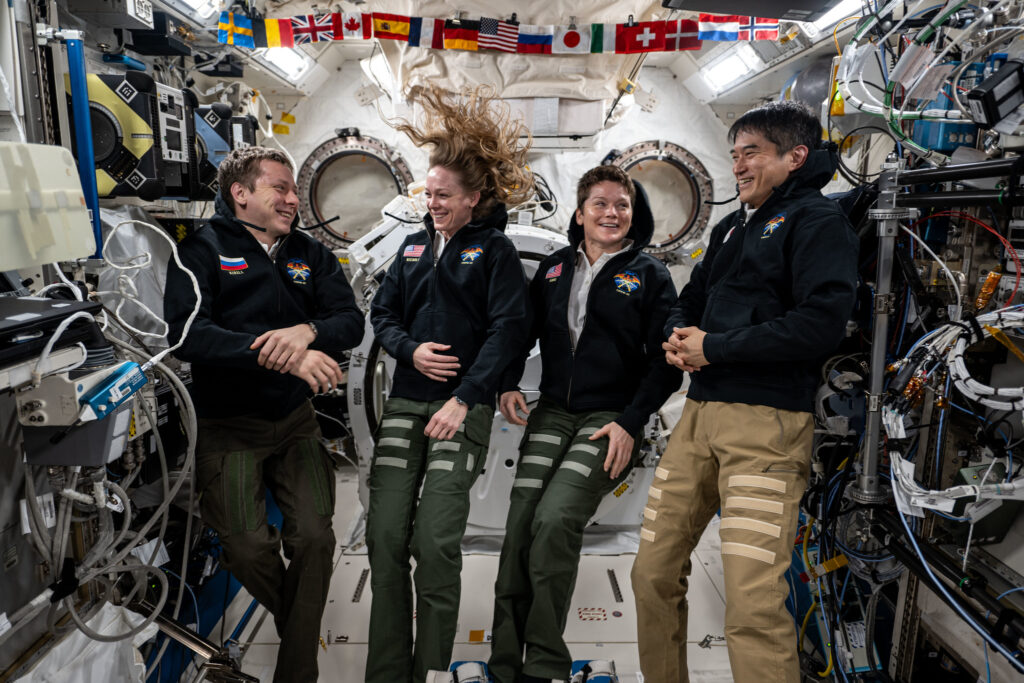
NASA and SpaceX are gearing up for a significant milestone in space exploration as the Crew-10 mission prepares for its return to Earth. The undocking from the International Space Station (ISS) is scheduled for no earlier than 12:05 p.m. EDT on Thursday, August 7, with the splashdown targeted for 11:58 a.m. on Friday, August 8. This event marks the first time a mission will splash down off the California coast under NASA’s Commercial Crew Program.
The Crew-10 team, consisting of NASA astronauts Anne McClain and Nichole Ayers, JAXA astronaut Takuya Onishi, and Roscosmos cosmonaut Kirill Peskov, is concluding a five-month scientific expedition aboard the ISS. Their return will bring back time-sensitive research critical to ongoing scientific studies.
Monitoring Conditions for a Safe Return
Mission managers are closely monitoring various factors that could impact the undocking and splashdown, including weather conditions, spacecraft readiness, and sea states. The precise timing and location for the splashdown will be determined closer to the undocking event, ensuring the safety and success of the mission.
NASA and SpaceX have a comprehensive plan in place to ensure the smooth execution of the return process. The live coverage of the event will be available on NASA+, Amazon Prime, and other platforms, allowing the public to witness this historic moment in real-time.
Live Coverage and Streaming Details
NASA’s coverage of the Crew-10 return is meticulously scheduled, with all times listed in Eastern Daylight Time. The schedule is subject to change based on real-time operations:
- Thursday, August 7:
- 9:45 a.m. – Hatch closure coverage begins
- 10:20 a.m. – Hatch closing
- 11:45 a.m. – Undocking coverage begins
- 12:05 p.m. – Undocking
- Friday, August 8:
- 10:45 a.m. – Return coverage begins
- 11:08 a.m. – Deorbit burn
- 11:58 a.m. – Splashdown
- 1:30 p.m. – Return to Earth media teleconference
The teleconference will feature key figures such as Steve Stich, manager of NASA’s Commercial Crew Program, and Sarah Walker, director of Dragon Mission Management at SpaceX, providing insights into the mission’s success and future implications.
Significance of the Crew-10 Mission
This mission is not only a testament to international collaboration in space exploration but also a demonstration of the capabilities of NASA’s Commercial Crew Program. The program aims to develop safe, reliable, and cost-effective human space transportation to and from the ISS and low-Earth orbit.
According to NASA, the success of missions like Crew-10 is crucial for the future of space exploration, as they pave the way for more ambitious projects, including potential missions to the Moon and Mars. The collaboration with SpaceX and other international partners highlights a new era of space travel that leverages commercial partnerships to achieve scientific and exploratory goals.
Looking Ahead
As the Crew-10 mission concludes, NASA and its partners are already looking to the future. The lessons learned from this mission will inform upcoming projects and help refine processes for future crewed missions. The success of the splashdown off the California coast could set a precedent for future landings, offering more flexibility in mission planning and execution.
With the increasing frequency of such missions, the public’s engagement and interest in space exploration continue to grow. NASA’s commitment to transparency and accessibility through live streaming and public engagement initiatives ensures that space exploration remains a shared journey for humanity.
The Crew-10 mission’s return marks another step forward in the ongoing journey of discovery and innovation in space exploration, promising exciting developments in the years to come.







